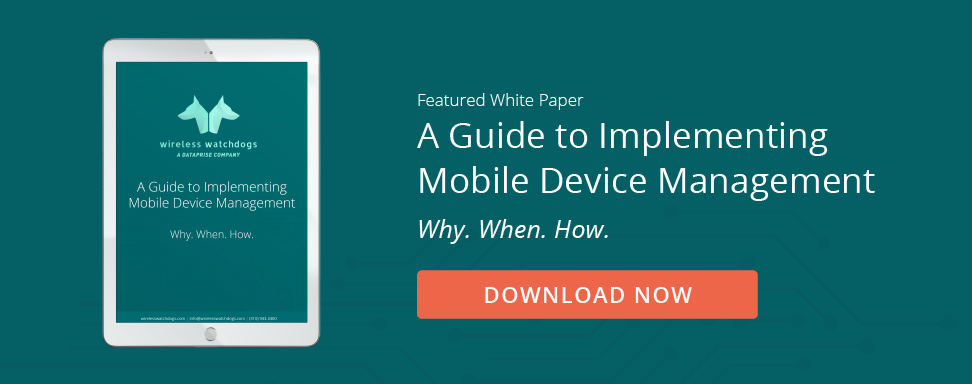The stats around mobile device and endpoint security are hard to ignore: 70% of successful breaches originate at the endpoint. 40% of CEOs view mobile devices as their biggest IT security threat. And only 7% of lost mobile devices are ever recovered.
Yet too often mobile device security isn’t fully integrated within a business and is overlooked in an organization’s security
environment. Mobile endpoints extend your attack surface and in turn, your potential for security gaps.
In our recent webinar with Dataprise, we explored the top ways an organization can increase mobile device security.
1. Only use industry- leading Mobile Device Management (MDM)/Unified Endpoint Management (UEM) platform solutions
Utilizing industry-leading Mobile Device Management (MDM) or Unified Endpoint Management (UEM) for the management of your handheld mobile devices, tablets, laptops and desktops allows your organization to utilize technology that is ahead of the curve with the latest hardware and software. The industry leaders in MDM/UEM invest heavily in their technology and have a significantly large team of engineers and developers, which allows for more configurations, features, and updates for mobile device security and management.
2. Leverage Apple Business Manager, Android Enterprise Enrollment, Knox, Microsoft Autopilot to streamline enrollment into MDM Solution
Wondering what role do these tools play and why are they important? Check out a clip from our expert Dave Schwartz below:
Essentially, these tools allow your organization to streamline and simplify enrollment and create a positive experience for your end-users.
3. Device encryption – incorporate screen unlock passwords / disk encryption with PC/MAC
Organizations often time make exceptions that certain users don’t need a passcode on their devices. The purpose of a passcode is to encrypt the device at a certain point. By having a passcode, it ultimately protects the organization because of the secure information that lives on the device.
Check out our expert go in to detail on different ways your organization can handle passcodes.
4. Regularly push out OS updates to user endpoints
By pushing out the updates automatically and prompting the users, an organization can see significant improvement of number of users that are on the latest operating system. At the end of the day, these operating system updates have to do with improving security on your device. Take a second right now to pull out your phone and make sure everything is up to date!
5. Deploy antivirus software / threat detection software
With the hybrid workforce in full swing, mobile devices have become endpoints that are not monitored as comprehensively, but they are just as vulnerable as desktops, laptops and servers. Organizations need to have threat detection software in place that encompasses every endpoint that exists and accesses critical data.
Listen to David use Crowdstrike, a threat detection software, as a solution.
If you haven’t deployed a robust mobile device and endpoint security and management program, now is the time. As mobile devices become more and more integrated as an endpoint, they become essential pieces of the organization to protect and ensure are secured.
Need help with mobile device management and security? Download our free eBook, A Guide to Implementing Mobile Device Management. It's full of great information on establishing MDM goals and policies, securing your mobile devices, and the like, and you can grab it right here:







